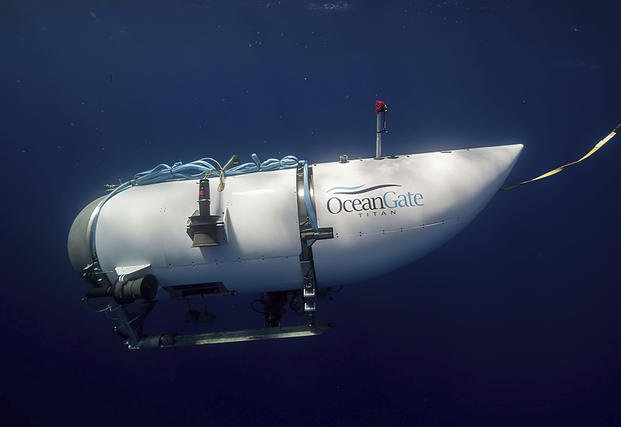The Navy says it picked up what may have been the implosion of the Titan -- the private submersible that was declared lost Thursday -- on its underwater microphones five days before rescue teams learned of its demise.
The revelation raised questions about how the Navy evidence, which was collected Sunday but not made public until Thursday, played into the large search-and-rescue effort that transfixed the world.
However, experts in submarine operations and sonar say that, while the data seems prescient in hindsight, it was likely inconclusive on its own and the search effort -- led by the U.S. Coast Guard but involving ships and military assets from the U.S. and several countries -- was still necessary and meaningful.
Read Next: 5th SFAB Commander Fired as Other Officers Face Misconduct Investigations
After first being reported by The Wall Street Journal, a senior Navy official told Military.com in an email that the sea service "conducted an analysis of acoustic data and detected an anomaly consistent with an implosion or explosion in the general vicinity of where the Titan submersible was operating when communications were lost."
The official went on to note that the data was "not definitive" but "immediately shared with the incident commander to assist with the ongoing search and rescue mission." The statement does not say when in the five-day search the data was shared.
On Thursday, the U.S. Coast Guard ultimately determined that the private submersible craft carrying five people attempting to view the wreckage of the Titanic suffered a catastrophic implosion after rescue teams located five different major pieces of debris with a remotely piloted vehicle.
Brynn Tannehill, a former Navy aviator who flew anti-submarine aircraft and spent time as a sonar operator aboard a submarine, noted that noises picked up on underwater microphones can often be ambiguous and always require secondary confirmation.
"Without confirmation generally all you can say is 'noises consistent with X,'" Tannehill wrote in a series of Tweets on Friday.
"Until you find the wreckage, you cannot rule out tectonic activity, other military activity that was unknown to the U.S., potential commercial operations, etc.," she added.
Chris Drew, a former military journalist and author who investigated the sinking of the USS Thresher -- a Navy submarine that sank in 1963 roughly 800 miles from the Titanic -- also noted that the sounds may have been made more ambiguous by the unusual nature of the small submersible.
"This is only a 22-foot submersible. … There's not as much sound because there's not as much to implode," he told Military.com in a phone interview Friday.
Drew noted that the Navy has far more experience with the sound of a steel-hulled, several-hundred-foot submarine imploding. "They probably don't have any experience at hearing a carbon-fiber pressure hull imploding."
Both Drew and Tannehill also pointed out that picking up a sound underwater does not mean you have its precise location.
"Judging distance and depth with hydrophones with passive detection is difficult," Tannehill wrote, before adding that determining distance requires cross-fixes -- directional data from several different sources.
In two naval submarine losses -- one U.S. and one Soviet, Drew said that "it was triangulating noises picked up by the underwater listening stations and other devices that helped us find the locations."
The USS Scorpion, which sank in the North Atlantic in May 1968, was heard by not only the Navy's own underwater Sound Surveillance System, or SOSUS, but also by two Air Force hydrophones in the water off Newfoundland. Drew said that it was this combination of sources that allowed the Navy to eventually locate the sub.
Bob Ballard, the famed undersea archaeologist, would eventually survey the wrecks of both the Thresher and Scorpion in a series of top-secret expeditions for the Navy between 1984 and 1986. In between, in 1985, he would find the wreck of the Titanic.
The Navy rarely discusses SOSUS -- a term that has come to be synonymous with a variety of programs and capabilities that monitor the ocean around the U.S. for submarines. In fact, the entire mission was officially classified until 1991, though at that point it had become an open secret.
The Navy senior official did say that there was a "compilation of additional acoustic data provided by other partners" but that "the decision was made to continue our mission as a search and rescue and make every effort to save the lives on board."
Ultimately, both Drew and Tannehill said that the Coast Guard was right to continue with the search effort despite the acoustic data from the Navy.
"You can't call off the search based on the one sound," Drew said.
Editor's note: This story has been updated to clarify the details of the Scorpion's sinking.
-- Konstantin Toropin can be reached at konstantin.toropin@military.com. Follow him on Twitter @ktoropin.
Related: Tourist Sub Debris Found Around Titanic Wreck as Hope for Survivors Vanishes












